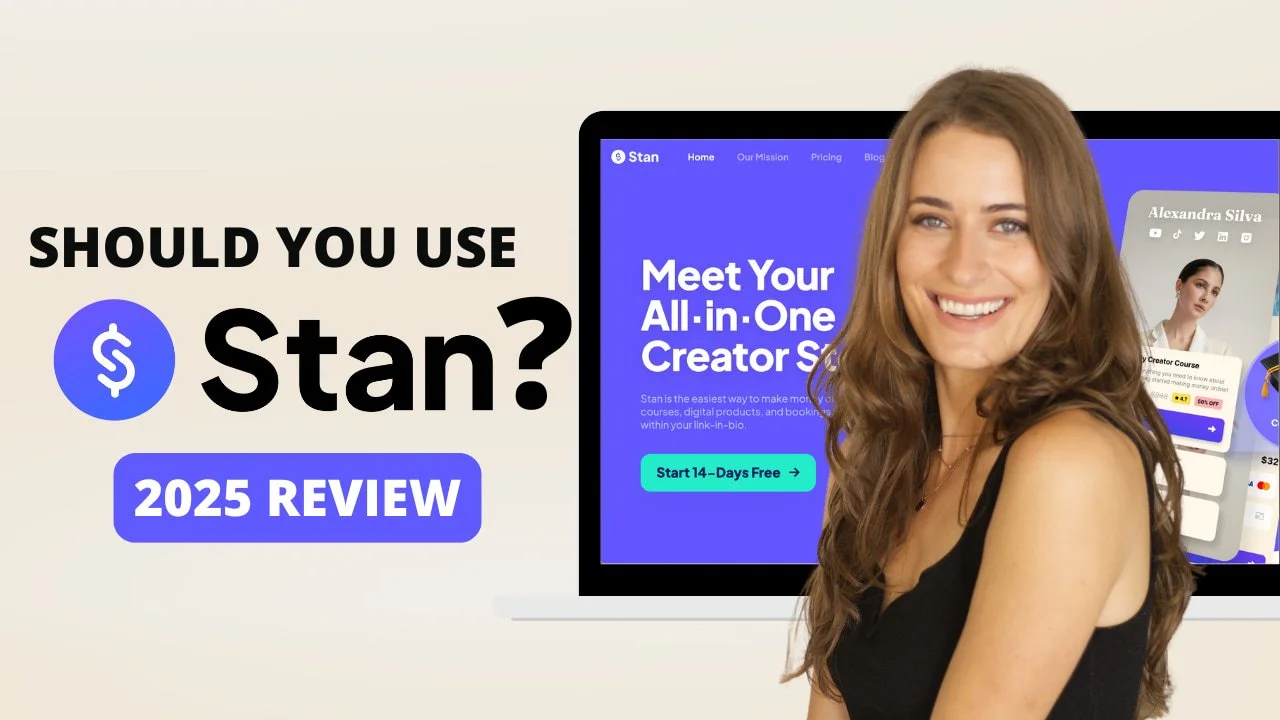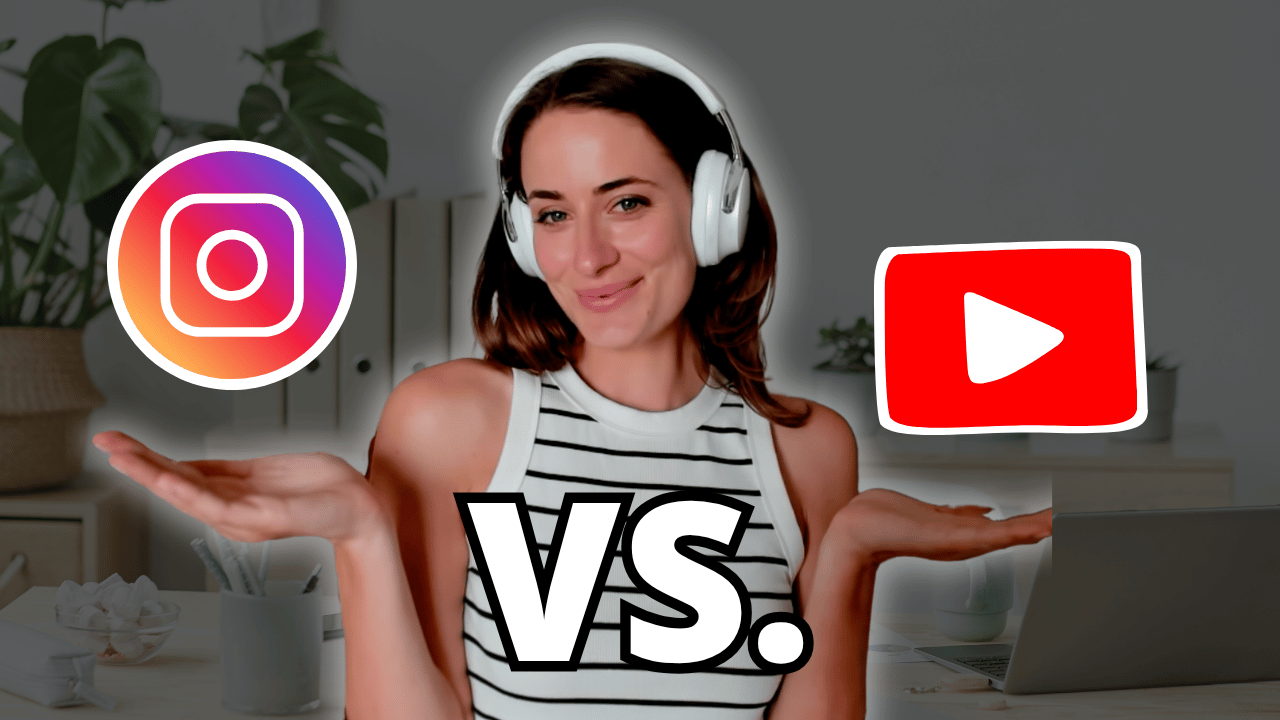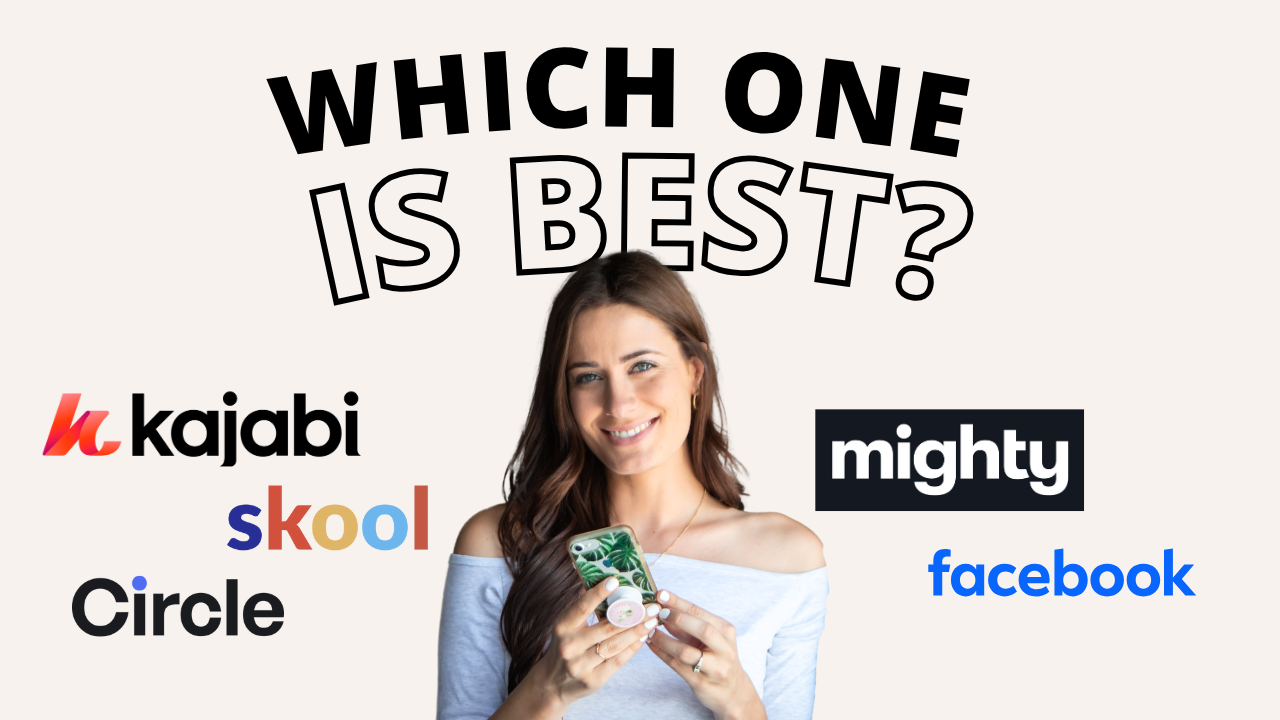How to Host a Live Online Workshop or Training with Crowdcast
Heads up: I use affiliate links for my fave products. If you click and purchase, I may receive a small commission at no extra cost to you.
Learn how to move your in-person workshops/trainings online!
HIT PLAY:
video transcript:
How to Host a Live Online Workshop or Training with Crowdcast
Welcome back to my new training series, Going Remote. Over the next 30 days, I’m posting as many videos as I possibly can to help you move your work from offline to online. Today’s video - How to Host a Live Online Workshop or Training with Crowdcast - is all about how to host a live workshop or training, so if you were doing any type of workshop in-person before this, I’m going to show you how to move it online.
The tool that we’re going to use for this is called Crowdcast. I’ve been using it for a few years now, and I am a total fan. It’s reliable, you’re going to get quality video, and you get real-time live chat so that your attendees can talk with you there. I’m going to show you exactly what to do, step-by-step, so that you can start hosting live workshops or training online asap.
Crowdcast Free Trial
I do have an affiliate link for Crowdcast. If you want to click the link in the description below and use that, I’d really appreciate it. Otherwise, go to Crowdcast.io. You can start with a free 14-day trial - let me just show you that. And here is the pricing – you can check that out and what each different plan includes.
This is the Free Trial - you get 10 live attendees and 30-minute sessions. All you have to do is click Start Trial, and then you’re just going to enter your email and create a password. Agree to the Terms of Service, and then click One More Step. You will have to type in your credit card information, but don’t worry - you won’t be charged until you pick a plan. You’re going to click Start Trial, and this will create your account. Type in your name and hit Save. You can then just X out of these.
Create Your Live Event
To create your first live event, you’re going to go up here and click New Event. First, you’re going to start with your Event Name. This works for any type of live training or workshop that you want to host. Let’s go ahead and type in the title – Live Coaching – then you can schedule it. You’re going to click Edit - I’m just going to go with Single under Event Type. If you click on the date right here under Start Time, this is going to bring up a calendar, so you can just select the date, and select the time with these dropdowns as well – let’s say I want to do 11am. Hit Done. Then here, under Description, is where you would type in your event description, and then you can decide, under Visibility, if you want this to be publicly listed on your Crowdcast profile, or you want this to be unlisted. For now, under Access, we’re just going to leave this so that anyone who signs up for the event is going to be able to watch it for free - I’ll talk at the end of this video about accepting payments for your event, so stay tuned for that. You’re going to hit Save. (I’m going to X of these so that I can continue teaching you guys.)
So, this is what the backend of Crowdcast looks like. As you can see, we have a countdown to our event. Before we dive into how to actually host your event, I’m going to show you how to customize the signup page.
Customize the Signup Page
The first thing you’re going to want to do is click on your name right up here, top right. Click Edit, and you’re going to add a profile picture here. Click Select File and add a photo. You can change your Username if you would like. Hit Save. You can also update this cover photo here – just click Update Cover Photo, then Select File, and add a cover photo as well.
Let’s go back to our event. Now what you’re going to do is click Edit, top right, and you’ll see that we have a few more tabs that we can customize.
Add a Cover Photo
The first one is Cover. This is how you add a cover photo for your event. Just change this to Yes right here. Now we need to upload a file. You’ll see that the recommended dimensions are 1200x630. What I would recommend you use for this is Canva. Canva is my favorite, free design software. Anytime you need to create a graphic in your business, that is the software that you should be using. This is what the backend of Canva looks like. As you can see, here are a few graphics that I’ve created for past trainings. Basically, I’m just saying the event is free, here’s the title, who it’s hosted by, and then the date, time and link for it as well. All you need to do is download this as a PNG. I will post some more training on Canva to my channel – so definitely hit Subscribe below so that you don’t miss those.
Let’s go back into Crowdcast. We’re going to click Select File and we’re going to upload that graphic. Now we’re going to hit Save. Let’s check out what this looks like for someone who’s going to sign up for your event. You’re going to click Options, top right, and then View Registration Page, and as you can see, this is what the page looks like so far. We have the title, date, we have the countdown, a button for them to save their spot, a cover photo, and event description. When someone wants to sign up for the event, all they need to do is click Save My Spot, and then type in their email in order to join the event – or they can sign in with one of these options here (Twitter, Facebook or Google).
Registration & Multistreams
Let’s go back into Edit mode. The next tab is Registration. If you want, you can collect more information from your attendees - but I’m happy with just collecting the name and email, which happens by default. Then we have Multistreams. If you want, you can actually click Enable Streams and you can stream into Facebook, YouTube, Periscope, or custom as well. I’m not going to cover this in this video. If this is something you would like to learn how to do, let me know in the comments down below.
Advanced Options
Then we’re going to go into Advanced. Here is where you customize a bit more about the event. First, you’re going to want to create a custom URL. I’m going to get rid of those letters and numbers, and I’m going to change this to something more custom.
You can limit seats, you can accept contributions, you can customize the registration button – by default it says Save My Spot – but you can change what that says if you want.
This is most important here - so I love this – they’re going to automatically send a registration email and they’re going to send a reminder email 10 minutes before the event starts, so you can just keep both of those on to make that happen. You can hide your attendees if you want, so if you don’t want everyone to see how many other people are there you can simply change this to Yes. You can also add in your Facebook Pixel. Let’s hit Save. Now it’s time to show you the backend of Crowdcast.
Live Chat
First, we have Live Chat over here on the right side. I love this because this is all in real-time. I’ve never experienced a delay, and this is going to allow your audience to chat with you as you’re presenting live. As an audience member, they would just come in here and they would type in a comment, hit Enter, and you’ll be able to see it, as well as everyone else who is attending the event. If you ever were to need it, you can always hover over it and you can actually ban the attendee and delete any comments if necessary – but usually that doesn’t happen.
People & Analytics
The next tab is People. Here is where you can click to see everyone who has signed up for the event. Then we have Analytics. This is going to give you some important data for your event - for example, how people are finding your event and where in the world they are.
Polls & Questions
Then we have Polls. If you want, you can create a poll for your audience. Then we have the Ask a Question tab. This is where I would direct your attendees to come if they have a question that they want you to answer. You just tell them to go there, then they can simply click Ask a Question and write their question here and hit Enter. All questions will show up here. I generally will get everyone to put their questions here, then you can respond to them all at the end.
Call to Action
The next tab is Call to Action. If you click on this, you can actually add a button below your video. Let’s say you want to sell something else on this free training – you can absolutely do that. You would come up here to Button Label and type in something like Buy Now, then you would put in the link for your sales page, and then hit Save. As you can see, right now it says Hide. This is really helpful. When it gets to the point in your presentation where you want to sell, then what you can do is you can simply click Call to Action and then Show, and this is going to add the button to the bottom of your video. It’s going to be a green button for your audience – that’s a really handy feature.
Going Live & Screensharing
Let’s prepare you to go live. To go live, you’re going to click Prepare to go Live, and then you’re going to click Enter greenroom with webcam. You’re going to need to allow a few things - I’m going to allow access there to my camera and mic. Then you’re going to be able to see what your webcam looks like and if your microphone is working. You’re going to hit Save, and then this is going to load in your video. To enable your camera and mic, just click Yes, let’s go. Now you can see yourself on video. You can X out of this right here and make any adjustments that you need.
The main thing you need to know is that you can do this. You can also share your screen. You’re just going to hover over you, and you’ll see this little Computer icon that says Share screen. Click on that, and you’ll be able to share your entire screen or application window. I would actually recommend choosing Application Window and then it will just show that specific program that you want to demo. For example, let’s say I was teaching how to use Canva. I would select that and then click Share, and this is what it looks like by default. To focus in on your screenshare, just click this Focus Screen icon right up here to focus your screen, and then you can go about teaching. This is a fantastic way to teach any live workshop.
You can click Click to close message so that you can see it better, and you can just simply go ahead and start doing your teaching. I love this program and think you will as well. It’s going to allow you to host any event or workshop that you need to, and at any point, you can come up here and click Unfocus Screen, or you can close it by clicking Close Video. I’m just going to close that, and then it will go back to me, so you can go in-between those.
So far, we have been in the greenroom to go live. All you have to do is click Go Live, then Yes let’s go. It’s going to give you a countdown and then you are officially live and can begin your workshop. When you are done, simply click End broadcast. Then you can give it a thumbs up if all went well, and you can give Crowdcast feedback, or you can skip it. Now it’s going to automatically generate a replay of your workshop. One thing I love about Crowdcast is that the replay is the same link as your live workshop. Simply share that link again and this time they’ll be able to sign up for the replay.
Create a Paid Event
There is one more thing I want to cover before we wrap up this training, and that’s how to create a paid event. I’m going to create a New Event, top left, fill in this information here, then where it says Access, you’re going to change this to Payment. You’ll see that you can add a fixed or sliding-scale pricing. I’m just going to do fixed, and I’m going to charge $50 for this workshop. Here you can choose your currency, and then you can actually add coupons as well if you would like. Let’s name this event Test Paid Event and hit Save. Now when someone goes to sign up for your event, since it’s paid, this is what they will see right here – a signup button with the price.
The final thing you need to do, in order to accept payments, is come up here to your top left, go down to your Settings, and then Integrations. Then you will need to connect your Stripe account. Stripe is how we easily accept credit card payments online. You’re going to want to set up an account with them, and then you’ll be able to connect this, and anyone who wants to sign up will be able to pay via credit card.
That is it for this training. You now know how to host any free live workshop or training that you want to do, as well as charge for events as well. If you have questions at all just let me know in the comments below, and definitely share this out if you think others will benefit from it. Thank you so much for watching and I’ll see you soon with another video.





![8 Simple Productivity Habits 🍃 [Working From Home Tips]](https://images.squarespace-cdn.com/content/v1/5696066f1115e0e4e3059106/1754827471549-ZKNAPAMQKEENQ4EBZ8IG/simple-productivity-habits-thumbnail.jpg)



![Kajabi Review 2025 - What You Need to Know Before You Buy! [Kajabi Pros & Cons]](https://images.squarespace-cdn.com/content/v1/5696066f1115e0e4e3059106/1747073445742-LIZROCCY37VZHY8DRA4K/Kajabi-review-2025-thumbnail.png)

In this video, I’ll show you step-by-step how to capture emails directly inside Instagram DMs using Manychat - no landing page required 🤯